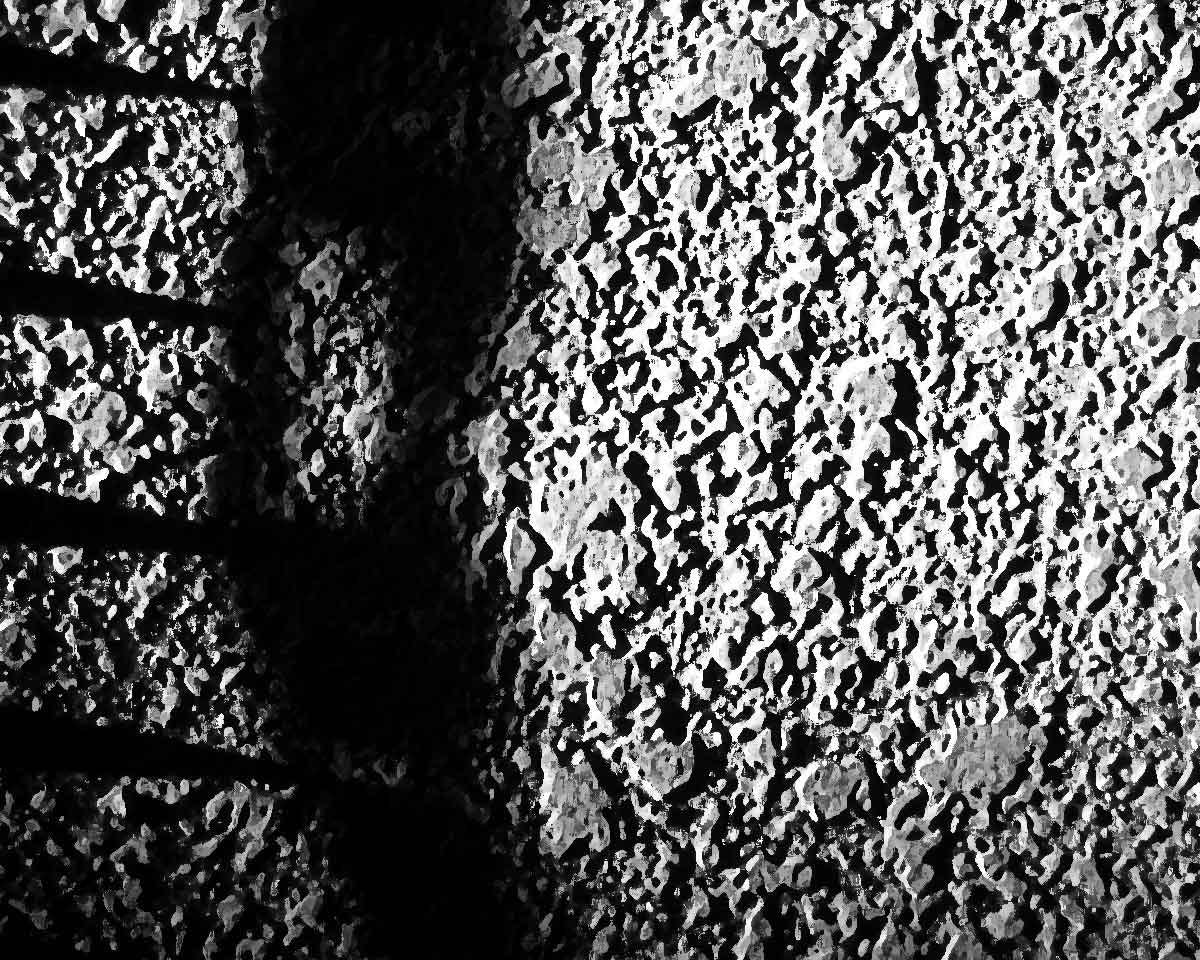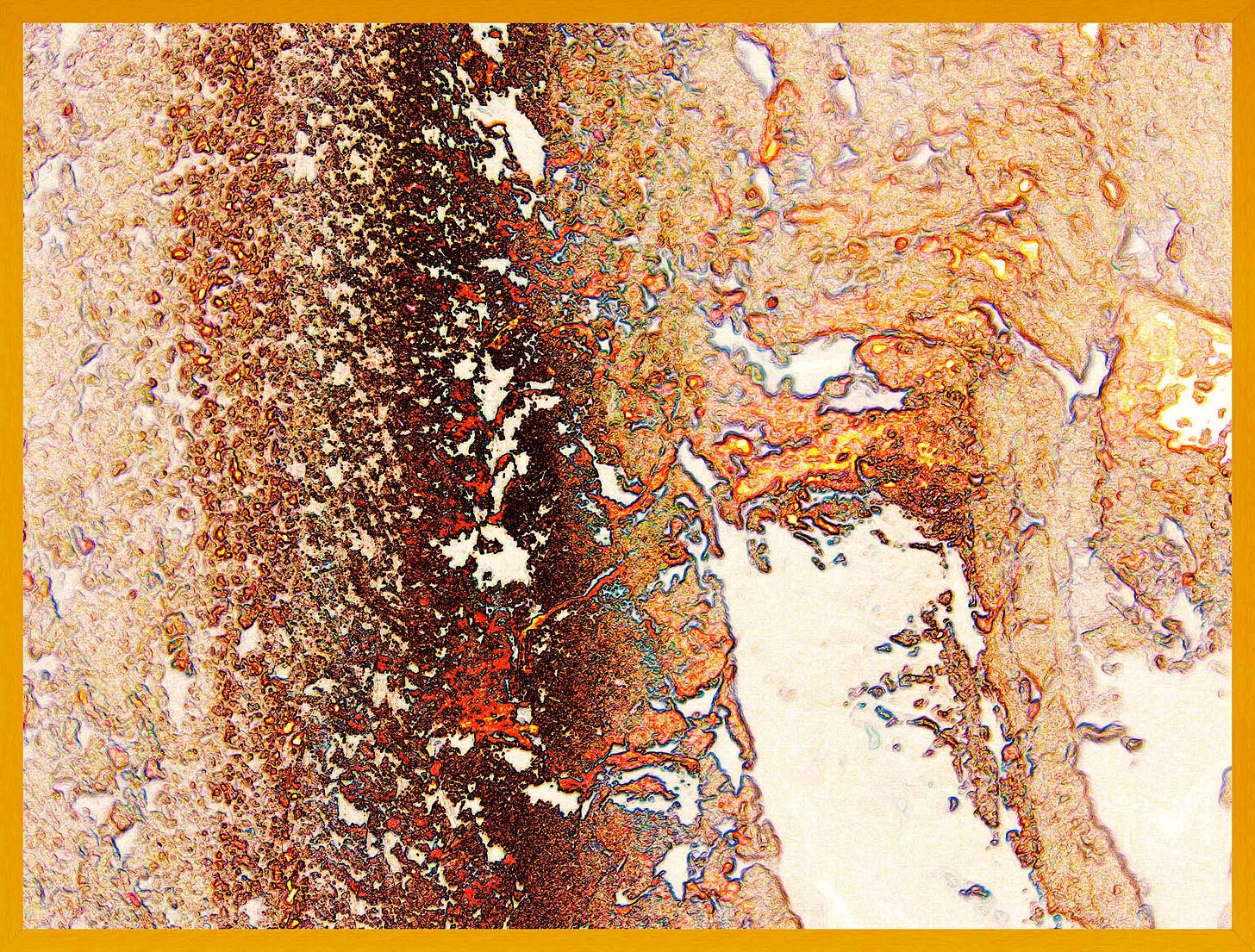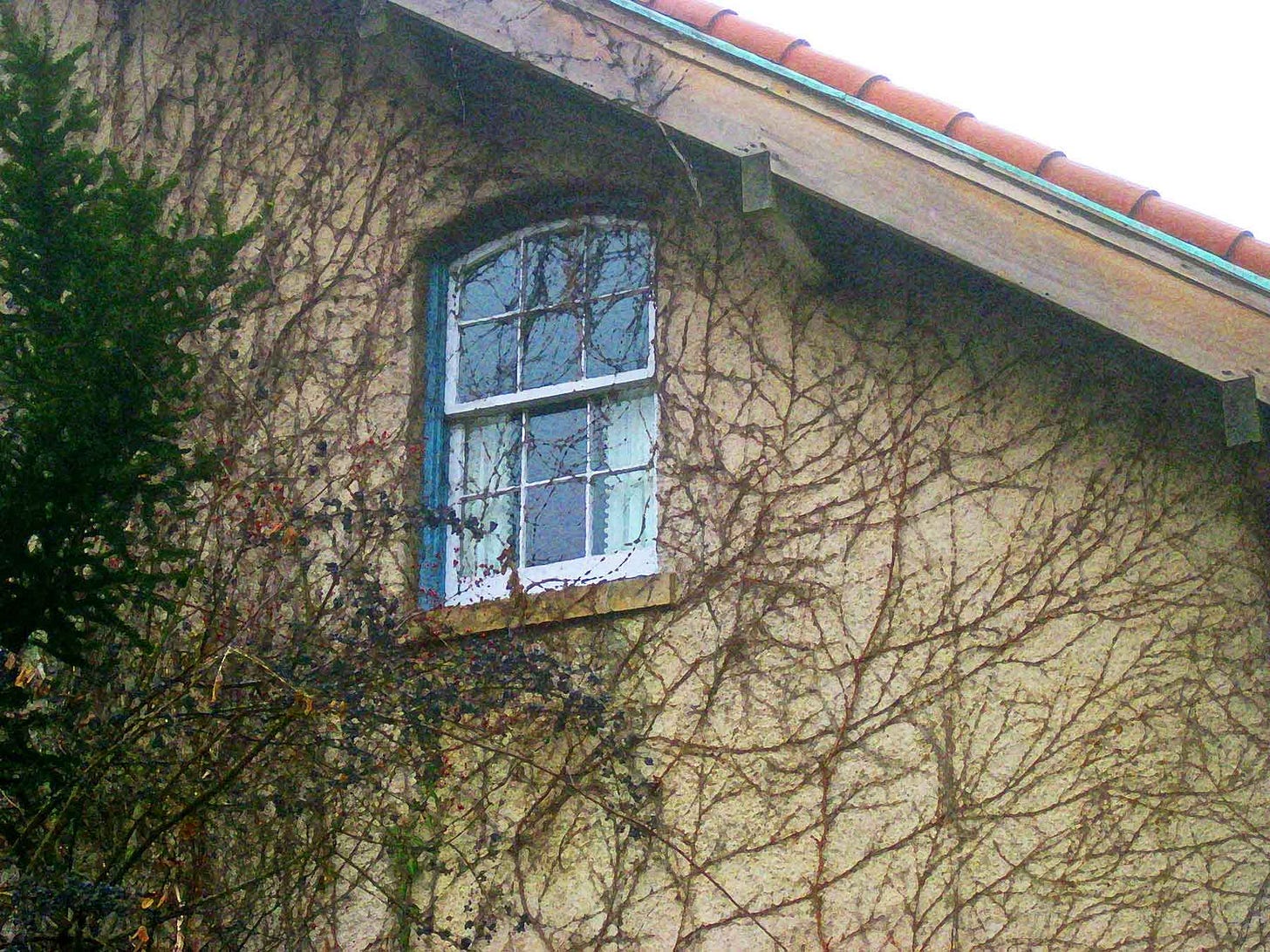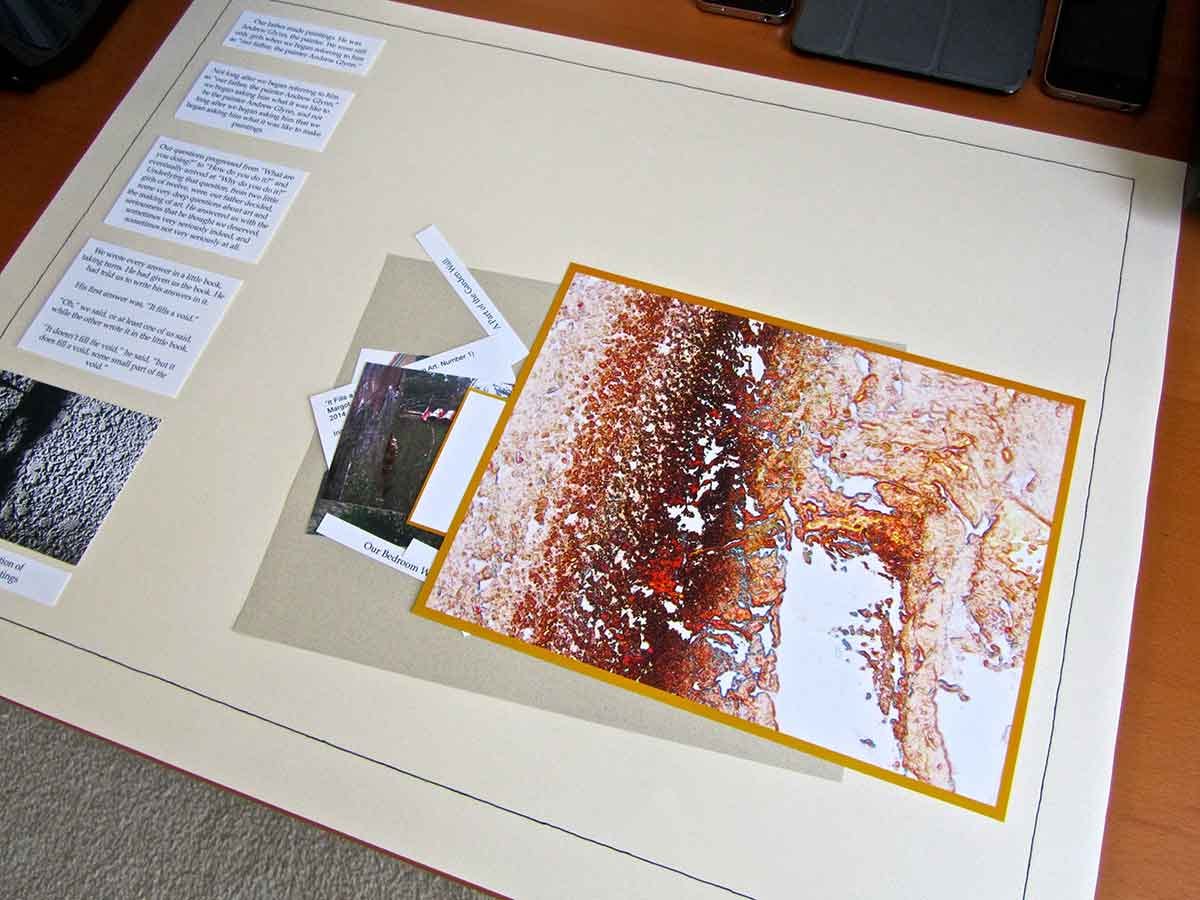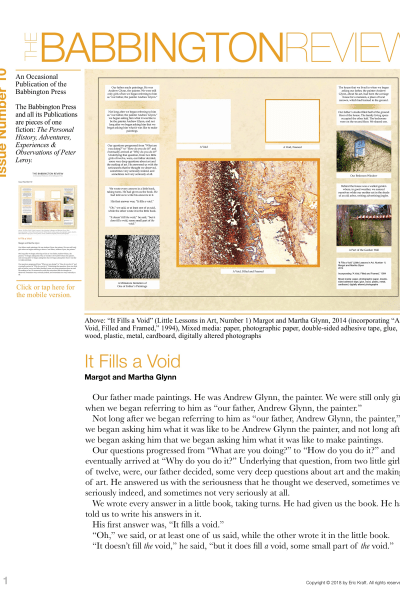Our father made paintings. He was Andrew Glynn, the painter. We were still only girls when we began referring to him as “our father, Andrew Glynn, the painter.”
Not long after we began referring to him as “our father, Andrew Glynn, the painter,” we began asking him what it was like to be Andrew Glynn the painter, and not long after we began asking him that we began asking him what it was like to make paintings.
Our questions progressed from “What are you doing?” to “How do you do it?” and eventually arrived at “Why do you do it?” Underlying that question, from two little girls of twelve, were, our father decided, some very deep questions about art and the making of art. He answered us with the seriousness that he thought we deserved, sometimes very seriously indeed, and sometimes not very seriously at all.
We wrote every answer in a little book, taking turns. He had given us the book. He had told us to write his answers in it.
His first answer was, “It fills a void.”
“Oh,” we said, or at least one of us said, while the other wrote it in the little book.
“It doesn’t fill the void,” he said, “but it does fill a void, some small part of the void.”
The house that we lived in when we began asking our father, Andrew Glynn, the painter, about his art, had been the carriage house for a mansion, a place of local renown, which had burned to the ground.
Our father’s studio filled half of the ground floor of the house. The family living space occupied the other half. The bedrooms were on the second floor. We shared one.
Behind the house was a walled garden where, in good weather, we sunned ourselves while our mother sat in the shade of an old arbor, writing advertising jingles.
About the Artists
Margot and Martha Glynn create photographs and mixed media artworks that combine images and text.
By reiterative abstraction of both content and container, they often create several similar yet unique works, upon which thoughts that have apparently just been developed are manifested: notes are made and then crossed out again, “mistakes” are repeated. From an early age, the Glynns have been fascinated by the traditional understanding of the human condition. With influences as diverse as Nietzsche, Roy Lichtenstein—and, of course, their father, Andrew Glynn, the painter—Margot and Martha generate insights from both explicit and implicit meanings. At times, the internal dynamic of the negative space in their work threatens to penetrate the inherent overspecificity of the content. What starts out as hope soon becomes corrupted into a cacophony of lust, leaving only a sense of dread and the possibility of a new reality.
Margot and Martha Glynn currently live and work in New York.
(From the catalog accompanying the exhibition “Little Lessons in Art” at the Serena Traulings Gallery)
“Rule Six: There is no Rule Six!”
Fourth Bruce in the philosophy department at the University of Walamaloo in Monty Python’s “The Bruces Sketch”
The Glynns’ works are often about contact with architecture and basic living elements. Energy (heat, light, water), space and landscape are examined in less obvious ways and sometimes developed in absurd ways. By manipulating the viewer to create confusion, the Glynns create intense personal moments by means of rules and omissions, acceptance and refusal, luring the viewer round and round in circles.
The Babbingtonian
In a search for new methods to “read the city” and “read the self” the Glynns’ focus on the idea of “public space” contrasted with “private space” and more specifically on spaces where anyone can do anything at any given moment and spaces where one cannot: the non-private space versus the private space, the non-privately-owned space versus the intimately guarded space, space that is economically uninteresting versus space that is owned.
Urban Eye
The Glynns’ mixed media artworks do not reference recognizable form. The results are deconstructed to the extent that meaning is shifted and possible interpretation becomes multifaceted.
Long Island Culture Today
The Glynns’ works are on the one hand touchingly beautiful, on the other hand painfully attractive. Again and again, the artists leave us orphaned with a mix of conflicting feelings and thoughts. As temporal derivatives become reconfigured through frantic and diverse practice, the viewer is left with a clue to the darkness of our world.
The Cassandra Chronicles
The Babbington Press and all its publications are pieces of one fiction: The Personal History, Adventures, Experiences & Observations of Peter Leroy.
You can begin reading the Personal History at the beginning or you can catch up by visiting the archive or consulting the index to the Topical Guide.
You can listen to the episodes on the Personal History podcast. Begin at the beginning or scroll through the episodes to find what you’ve missed.
You can ensure that you never miss a future episode by getting a free subscription. (You can help support the work by choosing a paid subscription instead.)
At Apple Books you can download free eBooks of “My Mother Takes a Tumble,” “Do Clams Bite?,” “Life on the Bolotomy,” “The Static of the Spheres,” “The Fox and the Clam,” “The Girl with the White Fur Muff,” “Take the Long Way Home,” “Call Me Larry,” and “The Young Tars,” the nine novellas in Little Follies, and Little Follies itself, which will give you all the novellas in one handy package.
You’ll find overviews of the entire work in An Introduction to The Personal History, Adventures, Experiences & Observations of Peter Leroy (a pdf document) and at Encyclopedia.com.





